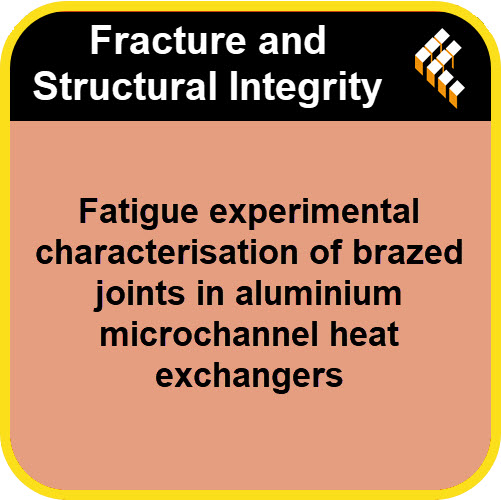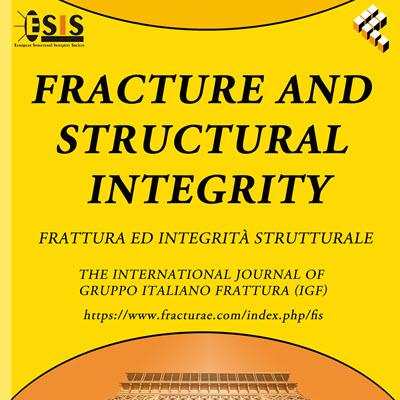Fracture and Structural Integrity: The Podcast
Stay at the cutting edge of fracture mechanics and structural integrity research with the official podcast of the Fracture and Structural Integrity journal. Join us for insightful interviews with top researchers, in-depth discussions of groundbreaking papers, and explorations of emerging trends in the field.
RSS Spotify YouTube Amazon Music
Fatigue experimental characterisation of brazed joints in aluminium microchannel heat exchangers
2025-10-24
https://www.fracturae.com/index.php/fis/article/view/5655
Brazing is a widely employed joining technique for aluminium components due to its cost-effectiveness and compatibility with complex geometries. However, the structural integrity of brazed joints under cyclic loading remains a scarcely addressed scientific and engineering concern. This study investigates the tensile and fatigue behaviour of aluminium 3xxx-series alloy components employed in microchannel heat exchangers—headers and multi-port extruded tubes—both in the as-received and heat-treated (brazing cycle) conditions. Tensile tests were performed on parent materials using a microtensile equipped with a Digital Image Correlation (DIC) system for accurate strain evaluation during testing. On the other hand, uniaxial fatigue tests were performed on specimens containing a representative brazed joint. Finite element analyses were used to design the fatigue specimen geometry based on stress concentrations observed in simplified heat exchanger models. Fatigue test data were employed to determine fatigue behaviour both in the finite life region of high-cycle fatigue and to characterise the fatigue endurance limit at 107 cycles. Experimental testing unveiled crack initiation consistently occurring at the brazed fillet toe near the tube lateral edge. SEM observations revealed surface-initiated cracking, ratchet marks, sub-surface inclusions and final ductile failure. Results underline the need for fatigue-based design criteria for brazed aluminium structures.
DownloadFiletype: MP3 - Size: 4 MB - Duration: 20:38m (320 kbps 44100 Hz)
Powered by Podcast Generator, an open source podcast publishing solution | Theme based on Bootstrap
